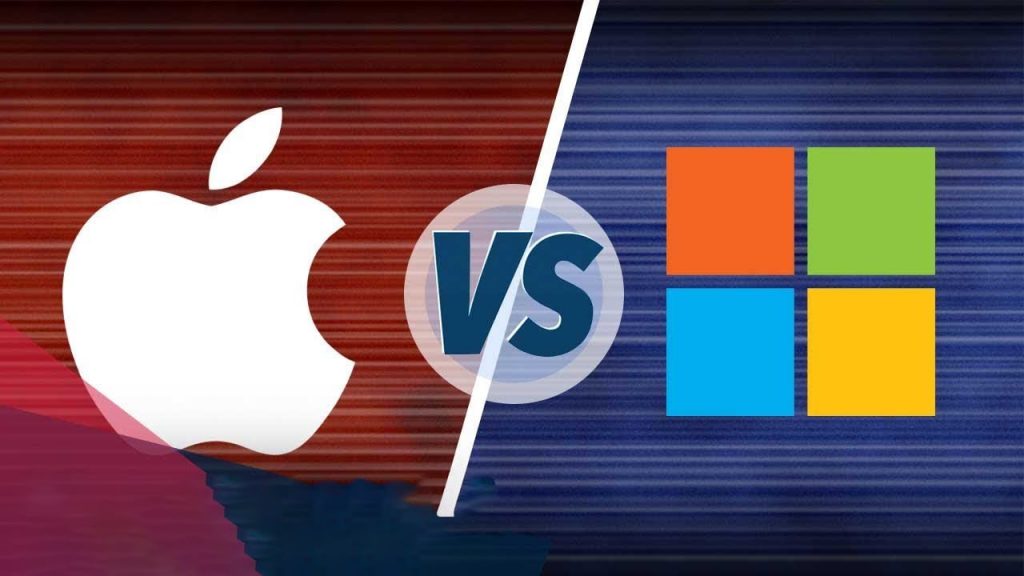Tech stocks are one of the most exciting categories in the stock market because it is where rapid change and promising returns are most alive. Technology touches on all parts of life, and it is always a venue for growth and progress. Competition is very intense in this sector, and great risks offer great rewards. The same is true for the losses. However, change is never far behind. Needless to say, the tech industry is one of the most dynamic in the stock market.
In studying tech stocks, it’s important to know the nature of each company’s business. Apple generates its profits from selling hardware and software (e.g. iOS and apps) while Microsoft is maintaining and enhancing its existing product lines. Amazon is unarguably the largest retail online stores in the world. Google derives its income from advertising, and has been working with Amazon’s competitors by tracking consumers from its search engine (Wall Street Journal 2012). Facebook is the newest baby among the giant tech stocks, entering the stock market only last year, which explains why it only has market cap data for 2012. However, it has been generating profit since 2007.
Among all the tech giants, Apple’s revenue rise is the most notable. Apple’s and Microsoft’s revenue figures intersected between 2009 and 2010. Apple’s revenues soared higher than Microsoft in 2010. By 2012, Apple had already overtaken Microsoft by $82,785. Apple enjoyed a dramatic increase in revenue in 2009, and it has not fall since. Microsoft’s revenues fell slightly from 2007 to 2009, but it has gradually recovered since.

The Apple vs. Microsoft rivalry has been tackled in several aspects, including technology and business performance. A steady rise in revenue is evident in 1998, a year after Steve Jobs assumed the role of “interim CEO”. It was also in 1998 when Apple launched the iMac and signals its “return to profitability”. Apple’s rise in revenues and profits should be credited to the growth of its new product lines. Microsoft, while its revenues have not gone down drastically, has clearly been surpassed by Apple. Microsoft maintains its revenues by maintaining their existing products. In terms of product innovation, Apple clearly outranks Microsoft, as evidenced by the revenues. Ruffer * Co. Chief Investment Officer Steve Russell says that “launching a key set of new products” might accelerate Microsoft’s revenue growth (Wall Street Journal 2012). However, there is a notable dip in Microsoft’s profits in 2011 and 2012. Microsoft used a chunk of its revenues on marketing, perhaps hoping to put their products out there to keep up with the competition. Microsoft has to face the challenges posed in the post-PC era, with the emergence of tablets and smartphones. Apple’s profit figures, meanwhile, are proof of its enduring popularity. Apple has been criticized for its lack of focus on product development (e.g. iPod, iPad, iPhone, Apple TV) but it clearly doesn’t show in the profits.
The infographic notes that the Amazon and Facebook have the smaller profits among the five giant tech stocks, while Google, even though offers a lot of free advertising, is enjoying a profit rise. Google is also enjoying revenue and profit from its Play Store (Android Apps) and Nexus products.
Amazon’s focus, since its inception in 1994, has been geared towards expanding its product and customer base, rather than upping its profits. Although the plan has worked successfully, financial analysts believe that they also have to show their ability to generate profit. Amazon CFO Thomasj. Szkutak, meanwhile, says that their investment and expenditure on product expansion are certainly geared for long-term benefits (Wall Street Journal 2012).
One of the major headlines in the financial community in 2012 was that Facebook revenue and profits took a dip just before its debut in the stock market. Wall Street Journal attributes this to “a leap in expenses”, addition/improvement of staff, and ‘absorbed costs from employee stock options” (Wall Street Journal 2012). It also acquired Instagram in 2012, shelling out $1bn on the photo-sharing app (Wall Street Journal 2012).
Apple’s drastic decrease in Market Cap is worth discussing because it rose rapidly in 2011 but by 2012, it was almost back to its original figure.
Change is crucial in the tech industry but it looks like Apple has to look for a new niche, aside from coming out with new versions of their iPhone and iPad. Still, its market cap dominates the other 4 giants.

When investing in tech stocks, you cannot just analyze the data separately. You need to ask why a certain figure increased or decreased, because there is a story behind it that will determine the health of that company’s stocks in the future. And, it’s important to distinguish stock indicators. For instance, an increase in revenue will not automatically mean increase in profit because tech companies, in an effort to keep up with change and competition will invest their profit on research and development.
Lastly, it is important to remember that a tech company is only as dominant in as far as it can expand its product range. For instance, Apple enjoys dominance in many aspects because of its hardware and software offerings. Microsoft and Google, meanwhile, are only starting to follow suit. The tech industry is one very exciting field to invest in, but the investor has to keep up with the pace of change.
Infographic courtesy of Staff.com
Image courtesy of [phanlop88] / FreeDigitalPhotos.net
Anna works in a foreign donor agency while pursuing her graduate studies in International Studies. She hopes to become a diplomat someday, although she is open to the idea of pursuing other fields in International Relations. She believes that it is every individual’s responsibility to be financially smart and to invest wisely. Anna uses her knack for writing and researching to propagate financial literacy. This free spirit draws energy from dancing, exploring new places, and soaking up random knowledge.
